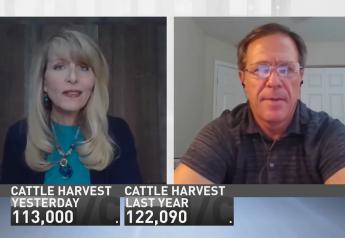Washington Insiders Now Think We Could Get a First Look at a New Farm Bill as Early as Next Week
04/08/24 AgDay - Farm Bill Timeline
The first look at a new farm bill could happen as early as next week. It’s long overdue after nothing was released out of Committee in 2023, and there’s growing doubt a farm bill will even be passed in 2024.
The latest timeline is according to Joe L. Outlaw, co-director, Agricultural & Food Policy Center (AFPC), Texas A&M University. In an interview with Farm Journal, Outlaw says the House Ag Committee could unveil its version of the farm bill the week of April 15.
Far From Finished
This is just the first step in a long process of getting a new farm bill across the finish line. Even if its version is passed out of committee, Outlaw says the quickest a farm bill has ever been released and then signed by the President is nine months, which means even if we see a first look at a new farm bill next week, it’s unlikely a final bill will be passed this year.
New Farm Bill
What’s possibly in the House Ag Committee’s version of the bill? The policy insiders we spoke to said it's almost a guarantee we will see an increase in the reference price under Title One.
"I think out of the House side, you will see a change in the reference prices," says Brad Weddelman, chief economist with Combest, Sell & Associates Chairman. "GT Thompson has said over and over again that he wants to look at reference prices and doesn't want to move forward without strengthening the farm safety net."
The bigger question right now is how much of an increase the House Ag Committee will make to reference prices when they unveil their version of the farm bill.
"I think that's the million-dollar question right now. Right? And a lot of it comes down to funding," says
Bart Fischer, co-director, Agricultural & Food Policy Center, Texas A&M.
"If you looked at it just in terms of cost of production, we're up roughly, on average, 30% from where we had been just in terms of cost," Fischer adds. "So that's an easy baseline to start with. But I don't know that we're going to have the funding to get to 30% increases across the board, because we're talking more than $100 billion at that point."
There have recently been reports that there will be $40 billion to $50 billion in additional funding beyond the farm bill baseline, but it’s not clear how the committee found those funds. Our own Jim Wiesemeyer says it could be changes to SNAP, tweaks to conservation funding, or even tapping into USDA’s CCC.







